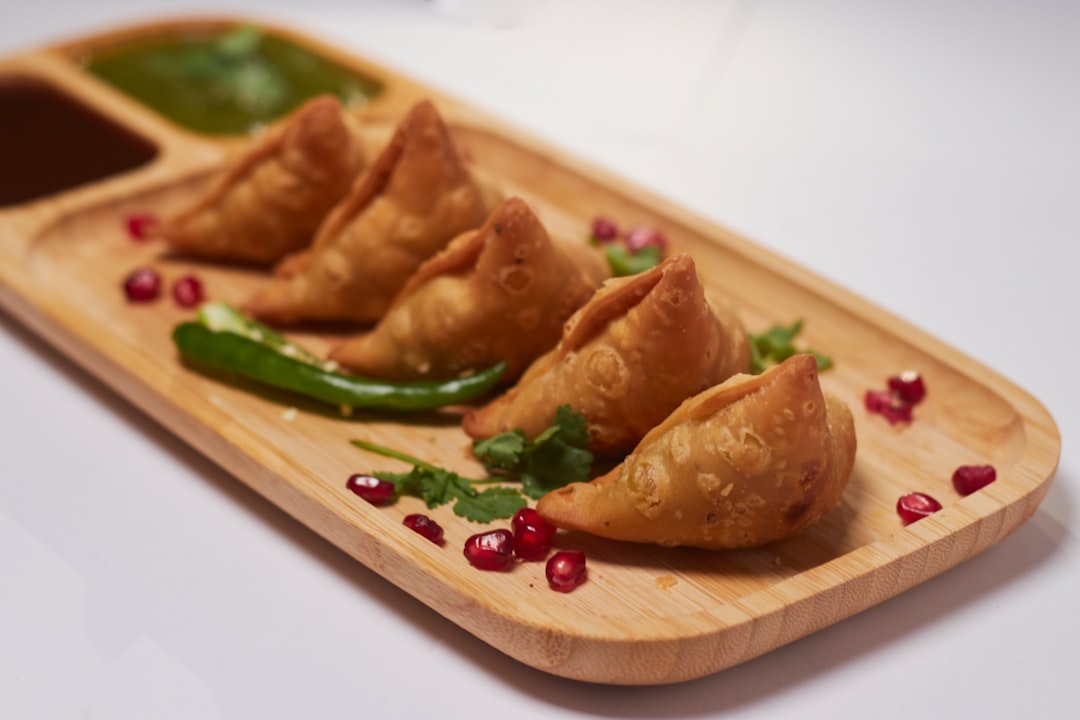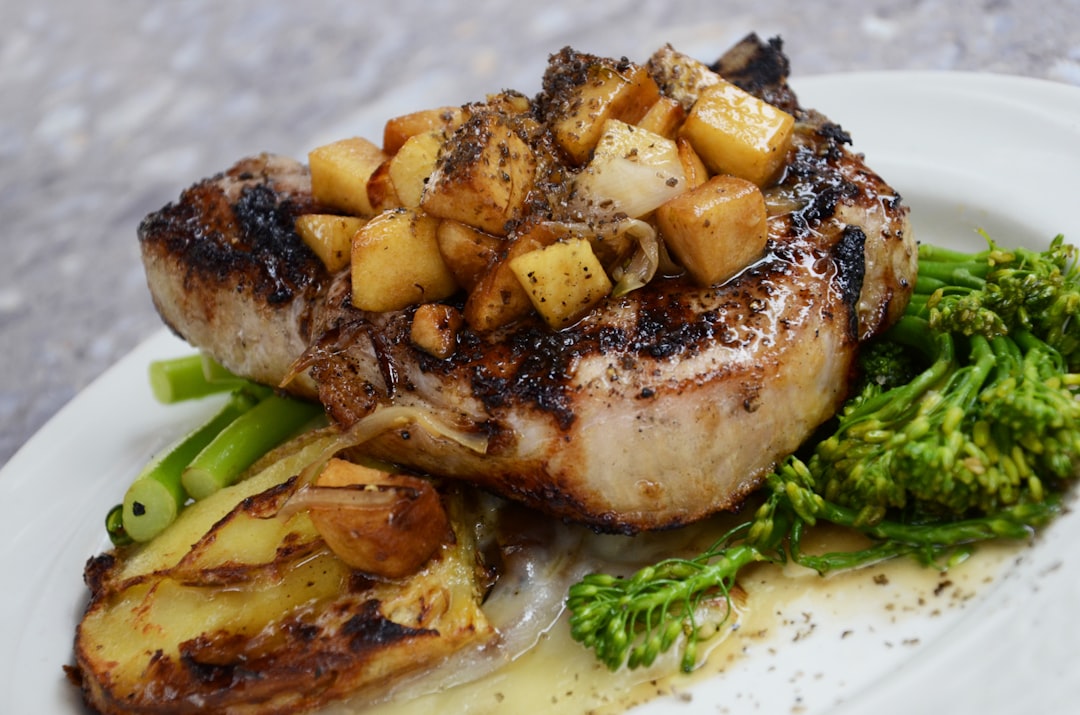what is it? why is it important?
A Calorie in food (technically a kilocalorie) is a measure of energy.
It is the amount of heat needed to cause the raise the temperature by one degree celsius in one kilogram of water
Whatever that means.
The human body needs energy to function and depending on the gender, the height, the weight, the activity level - we all have energy requirements. Let's just assume that number to be 2000, for the sake of this post. If I have to specify male/female, height+weight+activity level, it just adds a degree of complication that is not required, so I am going to skip right by all of it.
With 2000 calories/day, the energy requirements of this fictional person we have no details about are met. They do not put on weight nor do they lose weight. They are in energy balance.
one (extra) samosa a day
Let's say this person adds in a snack - just one samosa a day. That's not much.

That's approximately 250 calories. This means over a month, they are eating 7500 extra and over a year that becomes 90,000 Calories.
If nothing changes except for the extra 250 calories a day - that's equivalent to a samosa pretty much - the 90k calories will translate to almost 12 kilos of fat tissue on the body. Because excess energy that is not used, well, that's what happens to it.
to put on some muscle mass
If they decide to put on some muscle mass, they will need to increase their calorie intake for the day, preferably finding something of higher quality than a samosa. By how much? Time is a factor, as we've seen. Lesser over the longer term or more over the shorter term. Both can work. The common approach is to eat about 500 calories more for a period of 8-12 weeks with an extra focus on strength work at the gym.
to lose some weight
Likewise, to lose some weight, a similar approach is touted. They can decide to eat 250 calories lesser AND continue doing the same amount of work they are doing daily (lesser work will require lesser energy) and that can translate to about a kilo of fat loss over a month. How, you ask? 250 x 30 = 7500 calories. 3500 calories =~ 1lb of fat. 2.2 lbs = 1 kilo.
when should we calorie count?
For a lot of us starting off a diet, calorie counting is the go-to method. As convoluted as it seems to be, it allows us to get a handle on a few important things when we look at a few days of eating and tally them up. We will know
- what our macronutrient splits are i.e. how much of our diet is carbs, protein and dietary fat?
- how many calories are we actually eating?
- what is our goal and what is the calorie requirement for that?
So, if you have NEVER had an idea about where things are in your nutrition, calorie counting for a week is a great idea to understand things better.
the drawbacks
Unfortunately, the drawbacks of this method are a lot. Here are a few.
- inaccurate. The calories are all estimates rather than precise numbers. The calculation mechanisms for us as well are similar. They are meant to help us with a ballpark rather than worry about accuracy. And the inaccuracy compounds when we enter Indian cooking. For example, how much oil is absorbed when you fry that samosa, or how much dal goes into your sambar? Impossible and not worth keeping track of. Or take an apple. All apples are not the same size. But they have the same calorie count according to most calorie calculating websites. How's that even possible? The answer. It is not. Like I said, it is meant to be a ballpark calculator.
- time consuming. Poring over every food you eat, breaking it down and calculating calories is time consuming. It just is.
- leads to a slightly obsessive nature in thinking about foods. Over the course of a few days/weeks, it leads to us obsessing over foods. Some foods can become 'bad' in our heads because they are calorie-dense. For example, nuts are amazingly nutritious but calorie-dense. While we should be careful about how many we eat, if we look at nuts as calories, we will lose the plot. A lot of folks tend to think of nuts as bad because of this.
- not sustainable. The time, the thought process, the obsession, the calculation - it is not sustainable. It is not healthy. It ruins our relationship with food.
- leads to barter thinking. What I mean by this is we start looking at exercise and food as a barter system. "I ran 300 calories worth and so I can eat an extra samosa" is not the way to go about things at all. That's worth a separate post by itself and I'll do that another time.
then, how do we go about it?
Hopefully by now you agree that while calories are useful, they are not a solution or a sustainable method. Here's some practical ways to go about using the method without obsessing over them.

figure out where things stand
If you have never thought about your food much, then calorie counting (without changing anything up) for a week is a great idea. For one week, nitpick your way through the foods you are eating and use any of the zillion calorie counting apps. And that will give you an idea of what you are eating. More than a day, average things out over a week. For example, you might have consumed less vegetables on one day and more on another and that's how things are. Seeing the weekly average is a better idea.
You can also look at the macronutrient split, the daily intake, as well as what micronutrients you are missing out on.
figuring out your goals
Based on the goal, you can figure out what you need to be eating. Here's one place for you to calculate. Now, you have what you are doing and what you need to be doing.
the practical approach
Now, you are done with calorie counting. Almost. What you need to do next is come up with an approximation system. The system we recommend is based more on your fist-size (or cups if you want to be precise). The 2000 calories will approximately translate to (for maintenance)
- 2 to 2.5 cups of carbs
- 3 to 3.5 cups of vegetables
- 3 cups of protein
- 3ish litres of water
- some dairy, some nuts.
Might sound a bit too approximate but approximate works better. From a strict approach, you can spend the next 2-3 weeks with this system. And add in measuring yourself i.e. measure your chest, waist, hip, thigh circumference as well as your weight. You want to see this remain approximately the same. The waist going down means health is improving (I am generalising a bit too much here though).

From precise calorie counting for a week (which is imprecise), you move to this cup counting for 3 weeks. And average it out over each week. And see the measurements, as well as your performance at the gym.
If maintenance is happening (that's your goal, assuming) and you are feeling good, do what you are doing.
If you are losing weight and feeling a bit tired, eat a bit more.
If you are gaining weight, eat a bit less.
Tinker. See what data trends towards the next week.
It all comes down to you finding a system for yourself. It all comes down to you doing the 80% of what you need to do for as close to 100% of the time. For me, that comes to
- eating my veggies
- ensuring I get adequate protein
- drinking enough water
- getting enough sleep
- and lifting weights
Take the time to figure things out for you. When you have 4 weeks to spend on this. Not otherwise.
But remember, food is food. Not a number. Not to be seen as calories and 'good' vs 'bad' and all that. There's a place for beer. There's a place for ice-cream. There's a place for our favourite foods. It all lies in us finding the balance. Unless we are in elite athlete territory, we can ease back on the "food is fuel" way of thinking.
If this post is not clear and you need a lot more details, do let me know. Thanks for reading.

